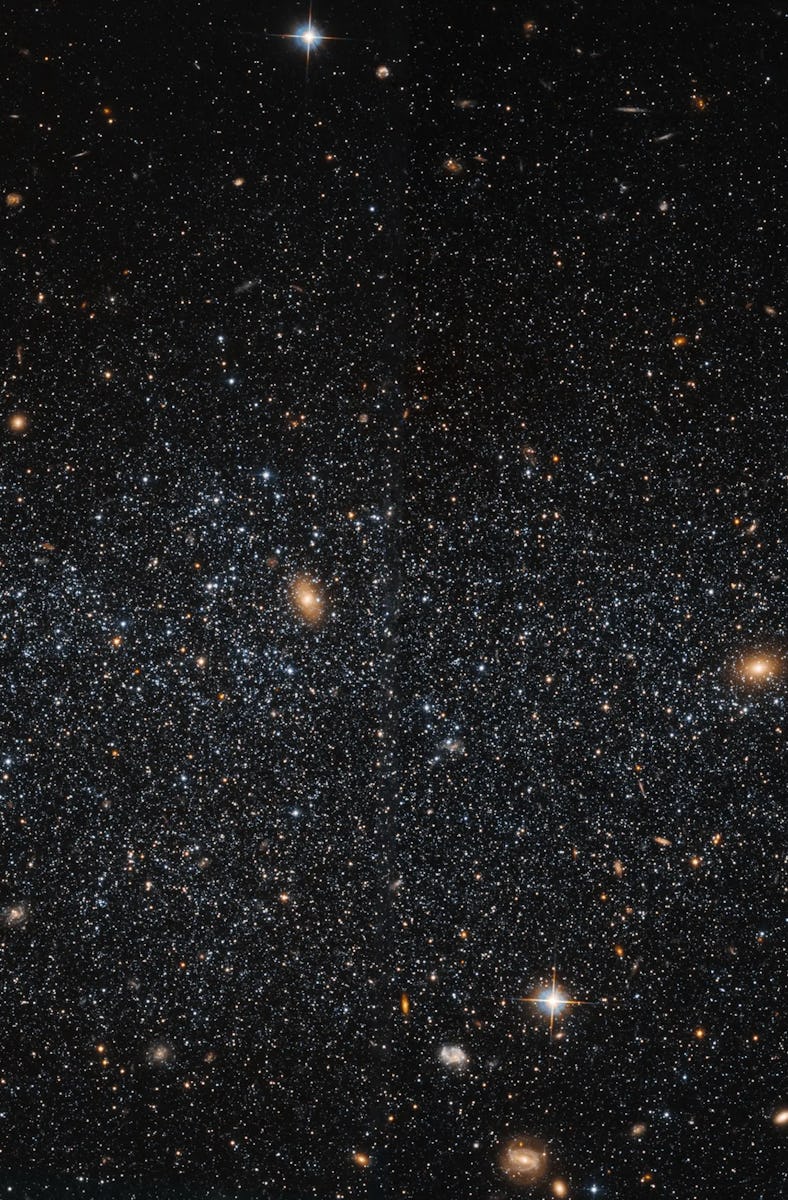A ‘Speckling of Stars’ At the Edge of the Milky Way Is Still Puzzling Astronomers
Leo A is small, dim and young.

Leo A lacks galactic glamor. NASA’s newly-published image of this dwarf galaxy is missing the Milky Way’s pizzazz, and Andromeda’s visual riches. But that’s what makes Leo A special.
Astronomers found Leo A beyond our galaxy, and past a few more, at the edge of our cosmic neighborhood. To see it, the Hubble Space Telescope peered 2.6 million light-years away. That’s a relatively close cosmic distance for galaxies. But it’s still extraordinary that Hubble saw Leo A, because this galaxy is small and dim.
This “speckling of stars,” the European Space Agency wrote in 2016, forms a single entity. “The relatively open distribution of stars in this diminutive galaxy allows light from distant background galaxies to shine through,” NASA Goddard Space Flight Center officials wrote in Thursday’s image description.
The sparsely-populated sphere in this Hubble Space Telescope image is dwarf galaxy Leo A.
This image comes from data Hubble took during four observation programs. Three of these looked at star formation and its history, in relatively nearby dwarf galaxies, including Leo A.
Although sparsely populated, Leo A’s stars have an order. They make a spherical shape in space. A pattern also emerged when astronomers peered at their ages.
The recent Hubble observations have revealed that Leo A’s younger stars are located in the middle, and they are older the farther they are from the dwarf galaxy’s center. This could offer clues about how galaxies evolve.
Perhaps stars formed from “the outside-in,” NASA wrote. Or, perhaps, older stars migrated towards the edges of Leo A.
But older is a relative term. According to NASA, “around 90 percent of the stars in Leo A are less than eight billion years old — young in cosmic terms!” Astronomers are puzzled about why this small galaxy, one of the most isolated galaxies in our local group of galaxies, didn’t form stars on a “usual” timescale.
“Instead,” NASA says, Leo A “waited until it was good and ready.”